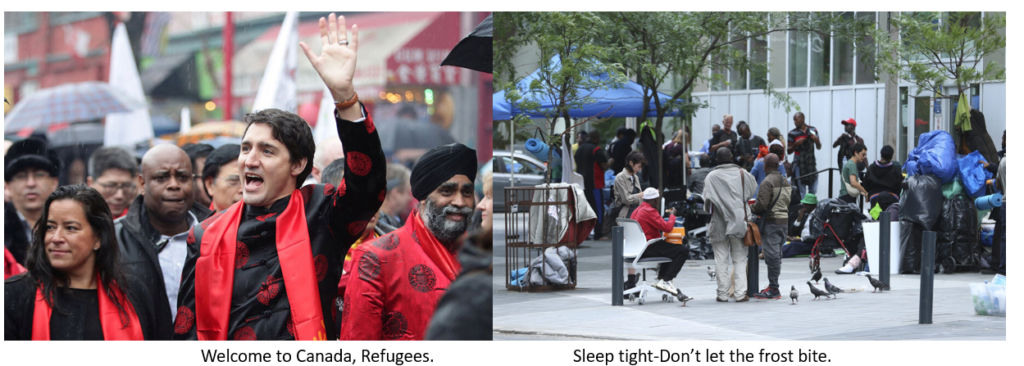
By Michael O’Neill
It’s story time in Canada, and you didn’t even need to go to your local library to listen to the latest fairy tale by Finance Minister Chrystia Freeland. All you had to do was tune into your favorite television network or YouTube to hear the story.
Ms. Freeland and her associates have lofty goals, which include building a strong, inclusive economy, emphasizing job creation, and middle-class prosperity. Key investments have been made in public transit, EV battery factories, and new energy projects.
That sounds great, but the question needs to be asked: Where and what kind of jobs are being created, and whose middle class will prosper?
South Korean workers are sure to benefit. Canada and Ontario gave Stellantis $15.0 billion to entice them to build an EV battery factory in Windsor, and the first 1,300 of the expected 2,500 new high-paying jobs created are slated for South Korean “specialists.” That leaves just 1,200 jobs for locals, which, as back-of-the-envelope math suggests, costs $12,500,000 to create one job per Canadian.
Nitpicking, you say. Perhaps! But there is more.
The government recognizes that there is a housing crisis. Canadians can’t find houses to buy, and when they do, they can’t afford to buy them. And it isn’t just a Canadian problem. The US, UK, Australia, New Zealand, and Germany are trying to deal with soaring prices and high demand.
That’s what happens when the world’s central banks slash interest rates to near-zero. Covid also taught people that living in densely packed, high-rise condos and having to share so many community amenities had a negative impact on “quality of life,” especially if your neighbors were anti-vaxxers, prone to infecting the neighborhood. Now everyone wants their own piece of paradise because, as the adage goes, “They are not making any more of it.”
But Ms. Freeland has a plan.
The government will ban non-resident, non-Canadians from purchasing residential property, and levy a 1.0% tax on under-used housing for existing non-resident, non-Canadian homeowners. They also plan to spend $4.0 billion to incentivize housing supply growth to create at least 100,000 new homes.
It’s a great idea, but as long as Canada allows 1 million new immigrants into the country each year, the housing crisis will get worse, not better.

Photos-Christian Science Monitor and CTV
Scotiabank economists estimate that government consumption and pandemic transfers represent 200 bps of the 475 bps of BoC rate hikes. A 2.0% drop in mortgage rates would go a long way in alleviating the concerns around mortgage renewals in the next two to three years.
Bank of Canada Governor Tiff Macklem doesn’t appear to be overly eager to cut rates. On November 22, he told the Saint John Chamber of Commerce that the progress of the inflation decline from 8.1% is slower than he hoped. He blamed the stickiness on workers demanding (and getting) large wage increases, while businesses increase prices more often and by larger amounts. He didn’t mention his role in fueling unchecked loan demand by telling Canadians that borrowing rates would remain at historic lows for the foreseeable future.
Mr. Macklem pointed out that fighting inflation half-heartedly, like what initially occurred in the 1970s, prolonged the problem. He is struggling between balancing the risks between under and over-tightening.
The solution may be to simply ‘put a sock in it.’

If the Bank of Canada stopped talking about all their wonderful work measuring and understanding why prices rise or fall, and just toiled quietly in the background, perhaps, consumers would be less fixated. And what’s the big deal having CPI at 2.0% or 2.5%?”
Desjardins Bank economists have a pretty optimistic view of the Canadian interest rate outlook. A recent macroeconomic report argues that if the BoC discounts shelter costs (which the BoC believes is a supply, not a demand issue) and inflation ticking lower (albeit slowly), Tiff Macklem may be encouraged to cut rates by Q2 2024, even before inflation hits its target. That will earn him kudos from consumers and the government because, at current rates, Canada’s debt servicing costs have more than doubled, to $46.5 billion in 2023 from $20.3 billion in 2021.
Not all fairy tales have happy ending. Disney’s little mermaid marries the prince of her dreams while in the original tale, she was turned into sea foam. The optimistic and upbeat 2023 Fall Economic Statement may suffer a similar fate.





